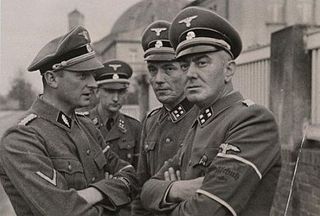 W
WLudolf Jakob von Alvensleben Wittenmoor-Plutowo/Thorn was a Standartenfuhrer (colonel) in the Nazi era SS and a senior staff member of the Action Reinhard group assigned by Reichsführer-SS Heinrich Himmler to systematically murder the Jews of Europe. He ended the war as SS and Police Leader (SSPF) of Adria-West, Northern Italy. He escaped investigation after the war and is reported to have died when his car overturned on a road outside Dortmund, in August 1953. There were no witnesses to the accident. The police chief at the time of the discovery and identification of the corpse had served under von Alvensleben in Southern Russia during the war.
 W
WLudolf Hermann Emmanuel Georg Kurt Werner von Alvensleben was an SS functionary of Nazi Germany. He held positions of SS and Police Leader in occupied Poland and the Soviet Union, and was indicted for war crimes including the killing of at least 4,247 Poles by units under his command.
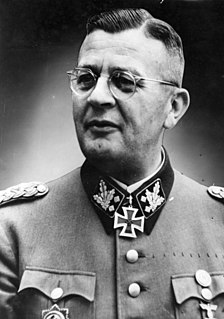 W
WErich Julius Eberhard von dem Bach-Zelewski was a high-ranking SS commander of Nazi Germany. During World War II, he was in charge of the Nazi security warfare against those designated by the regime as ideological enemies and any other persons deemed to present danger to the Nazi rule or Wehrmacht's rear security in the occupied territories of Eastern Europe. It mostly involved atrocities against the civilian population. In 1944 he led the brutal suppression of the Warsaw Uprising. At the end of 1941 the forces under von dem Bach numbered 14,953 Germans, mostly officers and unteroffiziere, and 238,105 local “volunteers”
 W
WTheodor Berkelmann was a German SS functionary during the Nazi era who served as the Higher SS and Police Leader in Saarland and Moselle during World War II.
 W
WAnton Leonhard Dunckern was a German SS-Brigadeführer.
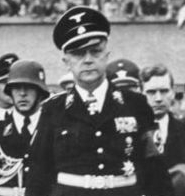 W
WFriedrich Karl Freiherr von Eberstein was a member of the German nobility, early member of the Nazi Party, the SA, and the SS. He was elected to the Reichstag and held the position of the chief of the Munich Police during the Nazi era. Eberstein was a witness at the Nuremberg Trials.
 W
WErich Ehrlinger was a member of the Nazi Party and SS. As commander of Special Detachment 1b, he was responsible for mass murder in the Baltic states and Belarus.
 W
WTheodor Eicke was a German SS functionary during the Nazi era. He was one of the key figures in the development of Nazi concentration camps during the Holocaust.
 W
WKarl Hermann Frank was a prominent Sudeten German Nazi official in the Protectorate of Bohemia and Moravia prior to and during World War II. Attaining the rank of Obergruppenführer, he was in command of the Nazi police apparatus in the Protectorate, including the Gestapo, the SD, and the Kripo. After the war, Frank was tried, convicted and executed by hanging for his role in organizing the massacres of the people of the Czech villages of Lidice and Ležáky.
 W
WOberführer and Oberst of Police Wilhelm Fuchs was a Nazi Einsatzkommando leader. From April 1941 to January 1942 he commanded Einsatzgruppe Serbia. From 15 September 1943 through 27 May 1944 he commanded Einsatzkommando 3. He was executed by hanging in Belgrade.
 W
WOdilo Lothar Ludwig Globocnik was an Austrian Nazi and a Holocaust perpetrator. He was an official of the Nazi Party and later a high-ranking leader of the SS. He had a leading role in Operation Reinhard, which organized the murder of around one and a half million mostly Polish Jews during the Holocaust in the Majdanek, Treblinka, Sobibor and Belzec extermination camps. Historian Michael Allen described him as "the vilest individual in the vilest organization ever known". Globocnik died by suicide shortly after being captured and detained by British soldiers.
 W
WCurt Gustav Friedrich Walther von Gottberg was a high-ranking Nazi official and SS commander. Beginning in October 1942, within a few years he combined the highest civil and military powers in occupied Belarus: from March 1943 as representative of the Higher SS and Police Leader for central Russia and from October 1943 as the acting Commissioner-General (Generalkommissar) of the occupied Belarus.
 W
WAugust Heißmeyer or Heissmeyer,, was a German SS functionary during the Nazi era. He commanded the SS Main Office in 1935–1939. After World War II, Heissmeyer was tried and convicted as a "major Nazi offender".
 W
WRichard Hermann Hildebrandt was a German war criminal, politician in Nazi Germany, member of the Reichstag, and a high-ranking Schutzstaffel (SS) commander.
 W
WOtto Hofmann was a German SS functionary during the Nazi era. He was the head of the SS Race and Settlement Main Office. Sentenced to 25 years in prison at the RuSHA Trial in 1948, Hofmann was released on 7 April 1954.
 W
WHans Benno Hüttig was a German SS functionary and Nazi concentration camp commandant.
 W
WFriedrich Jeckeln was a German SS commander during the Nazi era. He served as a Higher SS and Police Leader in the occupied Soviet Union during World War II. Jeckeln was the commander of one of the largest collection of Einsatzgruppen death squads and was personally responsible for ordering and organizing the deaths of over 100,000 Jews, Romani, and others designated by the Nazis as "undesirables". After the end of World War II in Europe, Jeckeln was convicted of war crimes by a Soviet military tribunal in Riga and executed in 1946.
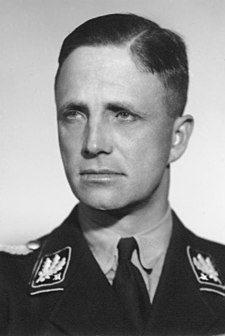 W
WJosias, Hereditary Prince of Waldeck and Pyrmont was the heir apparent to the throne of the Principality of Waldeck and Pyrmont and a general in the SS. From 1946 until his death, he was the head of the Princely House of Waldeck and Pyrmont. After World War II, he was sentenced to life in prison at the Buchenwald Trial for his part in the "common plan" to violate the Laws and Usages of War in connection with prisoners of war held at Buchenwald concentration camp, but was released after serving about three years in prison.
 W
WErnst Kaltenbrunner was a high-ranking Austrian SS official during the Nazi era and a major perpetrator of the Holocaust. He was the subsequent Chief of the Reich Security Main Office (RSHA), which included the offices of Gestapo, Kripo, and SD, from January 1943 until the end of World War II in Europe.
 W
WFritz Katzmann, also known as Friedrich Katzmann, was a German SS and police official during the Nazi era. He perpetrated genocide in the cities of Katowice, Radom, Lemberg (Lwów), Danzig (Gdańsk), and across the Nazi German District of Galicia during the Holocaust in occupied Poland, making him a major figure during the Holocaust there.
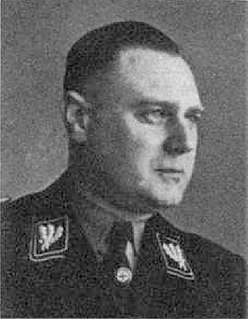 W
WKarl Heinrich Wilhelm Koppe was a German Nazi commander. He was responsible for numerous atrocities against Poles and Jews in Reichsgau Wartheland and the General Government during the German occupation of Poland in World War II.
 W
WKarl von Krempler, later only Karl Krempler was a German SS-Standartenführer and SS and Police Leader during the Nazi era. In World War II, he was responsible for recruiting Bosniaks from Bosnia and the Sandžak region of Serbia/Montenegro into the Waffen-SS.
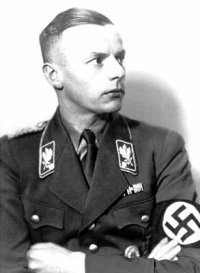 W
WFriedrich-Wilhelm Krüger was a German war criminal and a paramilitary commander acting as a high-ranking member of the SA and the SS. Between 1939 and 1943 he was the Higher SS and Police Leader in the General Government, giving him command of all police and security forces in German-occupied Poland. In this capacity, he organized and supervised numerous acts of crimes against humanity and had a major responsibility for the German genocide on the Polish nation, resulting in the extermination of 6 million Poles and massive destruction, deterioration and impoverishment of the Polish state. At the end of the war, he committed suicide.
 W
WFranz Kutschera was an Austrian Nazi politician and government official. He held numerous political and military positions with the Nazi Party and the Schutzstaffel (SS) both before and after the German Anschluss of Austria in 1938. During World War II he served with the SS in France, Yugoslavia and the Soviet Union.
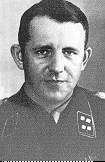 W
WRudolf Lange was a German SS functionary and police official during the Nazi era. With the invasion of the Soviet Union, he served in Einsatzgruppe A before becoming a commander in the Sicherheitsdienst (SD) and all RSHA personnel in Riga, Latvia. He attended the Wannsee Conference, and was largely responsible for implementing the murder of Latvia's Jewish population during the Holocaust.
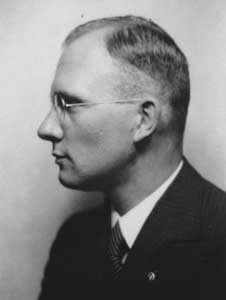 W
WKurt Werner Lischka was an SS official, Gestapo chief and commandant of the Security police (SiPo) and Security Service (SD) in Paris during the German occupation of France in World War II.
 W
WBenno Martin was a German SS functionary during the Nazi era. He served as Gestapo chief and Higher SS and Police Leader in Nuremberg. Martin was a member of the Nazi Party, joining in 1933.
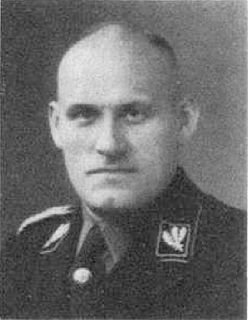 W
WEmil Mazuw, formerly Emil Maschuw was Landeshauptmann of the Province of Pomerania from 1940 to 1945. He was a member of the Schutzstaffel beginning in 1933. He held the ranks of SS-Obergruppenführer, General of the Waffen-SS (1944), General of Police (1942) and Ostsee Higher SS and Police leader (1939–1945). He had involvement with the euthanasia that was used during World War II. After the war, he was convicted of crimes associated with abuse of political prisoners and Jews. He was sentenced to 16 years imprisonment.
 W
WJosef Albert Meisinger, also known as the "Butcher of Warsaw", was a SS functionary in Nazi Germany. He held a position in the Gestapo and was a member of the Nazi Party. During the early phases of World War II Meisinger served as commander of Einsatzgruppe IV on Poland. From 1941 to 1945 he worked as liaison for the Gestapo at the German embassy in Tokyo. He was arrested in Japan in 1945, convicted of war crimes and was executed in Warsaw, Poland.
 W
WAugust Edler von Meyszner was an Austrian Gendarmerie officer, right-wing politician, and senior Ordnungspolizei officer who held the post of Higher SS and Police Leader in the German-occupied territory of Serbia from January 1942 to March 1944, during World War II. He has been described as one of Reichsführer-SS Heinrich Himmler's most brutal subordinates.
 W
WHeinrich Müller was a high-ranking German Schutzstaffel (SS) and police official during the Nazi era. For the majority of World War II in Europe, he was the chief of the Gestapo, the secret state police of Nazi Germany. Müller was central in the planning and execution of the Holocaust and attended the January 1942 Wannsee Conference, which formalised plans for deportation and genocide of all Jews in German-occupied Europe—The "Final Solution to the Jewish Question". He was known as "Gestapo Müller" to distinguish him from another SS general named Heinrich Müller.
 W
WArthur Nebe was a key functionary in the security and police apparatus of Nazi Germany and a perpetrator of mass murder in the Holocaust.
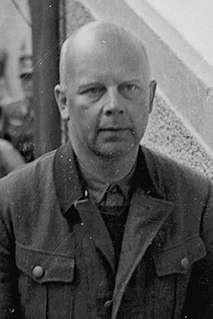 W
WCarl Oberg was a German SS functionary during the Nazi era. He served as the head of the SS and police (HSSPF) in occupied France during the Second World War and came to be known as the Butcher of Paris. Oberg deported over 40,000 Jews from France and had hundreds of hostages executed. Arrested by the Americans in the Tyrol in July 1945, he was twice sentenced to death by two different courts. However, in 1958 the death sentence was commuted to life imprisonment and later reduced to 20 years hard labour. Oberg was eventually pardoned and released on 28 November 1962.
 W
WGünther Friedrich Wilhelm Ludwig Pancke was a German SS functionary during the Nazi era who served as Higher SS and Police Leader of Denmark.
 W
WArtur Gustav Martin Phleps was an Austro-Hungarian, Romanian and German army officer who held the rank of SS-Obergruppenführer und General der Waffen-SS in the Waffen-SS during World War II. At the post-war Nuremberg trials, the Waffen-SS – of which Phleps was a senior officer – was declared to be a criminal organisation due to its major involvement in war crimes and crimes against humanity. An Austro-Hungarian Army officer before and during World War I, he specialised in mountain warfare and logistics, and had been promoted to Oberstleutnant by the end of the war. During the interwar period he joined the Romanian Army, reaching the rank of General-locotenent, and also became an adviser to King Carol. After he spoke out against the government, he asked to be dismissed from the army after being sidelined.
 W
WHans-Adolf Prützmann was a high-ranking German SS official during the Nazi era. From June to November 1941, he served as the Higher SS and Police Leader in the Army Group North Rear Area in the occupied Soviet Union. In this capacity, he oversaw the activities of the Einsatzgruppen detachments that perpetrated The Holocaust in the Baltic States.
 W
WRudolf Querner was a German SS functionary during the Nazi era. He served as the Higher SS and Police Leader in Austria and Germany and was responsible for the evacuations and death marches from concentration camps at the end of the war. Arrested by the Allied authorities, he committed suicide in prison.
 W
WJohann Baptist Albin Rauter was a high-ranking Austrian-born SS functionary and war criminal during the Nazi era. He was the highest SS and Police Leader in the occupied Netherlands and therefore the leading security and police officer there during the period of 1940–1945. Rauter reported directly to the Nazi SS chief, Heinrich Himmler, and also to the Nazi governor of the Netherlands, Arthur Seyss-Inquart. After World War II, he was convicted in the Netherlands of crimes against humanity and executed by firing squad.
 W
WFriedrich Wilhelm Rediess was the SS and police leader during the German occupation of Norway during the Second World War. He was also the commander of all SS troops stationed in occupied Norway, assuming command from 22 June 1940 to his death.
 W
WHeinz Reinefarth, 26 December 1903 – 7 May 1979) was a German SS commander during World War II and government official in West Germany after the war. During the Warsaw Uprising of August 1944 his troops committed numerous atrocities. After the war Reinefarth became the mayor of the town of Westerland, on the isle of Sylt, and member of the Schleswig-Holstein Landtag. Polish demands for extradition were never accepted, nor was Reinefarth ever convicted of any war crime.
 W
WErwin Friedrich Karl Rösener was a German Schutzstaffel (SS) commander during the Nazi era. During World War II, he was responsible for mass executions of civilians in Slovenia. Rösener was put on trial for war crimes and sentenced to death on 30 August 1946, then executed by hanging on 4 September 1946. He was posthumously included in the indictment at the Nuremberg Trials for war crimes.
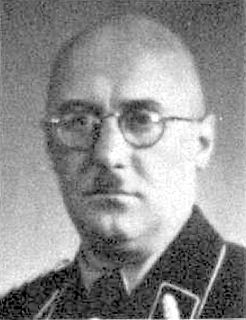 W
WFerdinand von Sammern-Frankenegg was a German SS functionary during the Nazi era. He served in World War I and then after Germany had formally surrendered, in the Freikorps Oberland and the Steirischer Heimatschutz. He served as SS and Police Leader of the Warsaw area in German-occupied Poland from 1941 until 1943 during World War II.
 W
WGustav Adolf Scheel was a German physician and Nazi politician. As a SS member and Sicherheitsdienst employee, he became a "multifunctionary" in the time of the Third Reich, including posts as leader of both the National Socialist German Students' League and the German Student Union, as an Einsatzgruppen commander in occupied Alsace, as well as Gauleiter and Reichsstatthalter in Salzburg from November 1941 until May 1945. As Einsatzgruppen commander, he organized in October 1940 the deportation of Karlsruhe's Jews to the extermination camps in the east.
 W
WJulian Scherner was a Nazi Party official and a high-ranking member in the SS of Nazi Germany. During World War II, he served as the SS and Police Leader of Kraków, Germany-occupied Poland.
 W
WWalter Schimana was an Austrian functionary in the German SS during the Nazi era. He was SS and Police Leader in the occupied Soviet Union in 1942 and Higher SS and Police Leader in occupied Greece from October 1943. Responsible for numerous war crimes and atrocities in the occupied territories, Schimana was arrested by the Allies after the war and committed suicide while awaiting trial.
 W
WErnst-Heinrich Schmauser was a commander in the SS of Nazi Germany who was the Higher SS and Police Leader in Breslau during World War II. Later in the war, he was responsible for the death march from Auschwitz-Birkenau concentration camp, in which upwards of 25 percent of the prisoners were killed. Schmauser was also a member of the German Reichstag representing the Nazi Party.
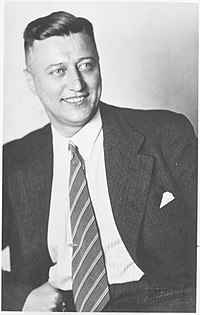 W
WKarl Eberhard Schöngarth was a German SS functionary during the Nazi era. He was a war criminal who perpetrated mass murder and genocide in German-occupied Poland during the Holocaust.
 W
WOtto Schumann was a German SS and police general during the Nazi era. He was born in Metz, Lorraine, on 11 September 1886. During the First World War, he served in the German Army as an officer. After the war, he became a police officer. Otto Schumann joined the NSDAP in 1933 and the SS in 1939.
 W
WJakob Sporrenberg was an SS-Gruppenführer und Generalleutnant der Polizei in Minsk, Belarus and Lublin, Poland. After the war, Sporrenberg stood trial in Poland and was convicted in 1950 of war crimes and sentenced to death. He was executed in December 1952.
 W
WOtto Steinhäusl was an Austrian-born SS-Oberführer, Polizeipräsident of Vienna, and President of Interpol (1938–1940).
 W
WEduard Strauch was a German Nazi SS functionary, commander of Einsatzkommando 2, commander of two Nazi organizations, the Security Police, or Sipo, and the Security Service, first in Belarus – then called White Russia or White Ruthenia – and later in Belgium. In October 1944, he was transferred to the militarised branch of the SS, the Waffen-SS.
 W
WKarl Freiherr von Fischer-Treuenfeld was a German Waffen-SS commander. A brigade commander during the Nazi era, during the invasion of the Soviet Union, he commanded the 2 SS Infantry Brigade and the 1 SS Infantry Brigade, which engaged in the murder of Jews, communists and partisans (bandits). Treuenfeld later commanded the SS Division Frundsberg. He committed suicide in 1946 whilst in American custody.
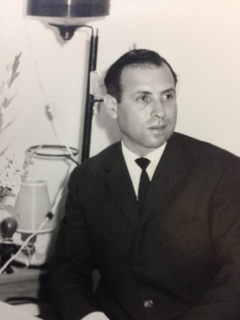 W
WErnst Josef Albert Weiner was a German SS-Hauptsturmführer during World War II. He was most noted for his role in Operation Blumenpflücken during the occupation of Norway by Nazi Germany.
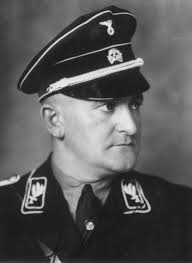 W
WFritz Weitzel was a German SS commander during the Nazi era.
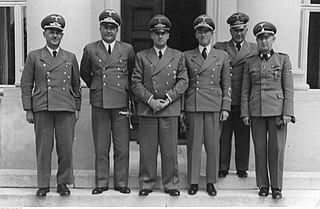 W
WRichard Wendler was a high-ranking Nazi official during World War II. During the occupation of Poland, he was the Governor of new District Lublin in the General Government, in charge of Lublin concentration camp and the creation of the Częstochowa Ghetto, among others. Before his deployment to Poland, he was the mayor of the city Hof between 1933 and 1941 and became an SS-Gruppenführer in 1942 during the murderous Operation Reinhard. Wendler was Reichsführer-SS Heinrich Himmler's brother-in-law; his sister was married to a brother of Himmler.
 W
WArpad Jakob Valentin Wigand was a Nazi German war criminal with the rank of SS-Oberführer who served as the SS and Police Leader in Warsaw (SS-und Polizeiführer from 4 August 1941 until 23 April 1943 during the occupation of Poland in World War II.
 W
WKarl Friedrich Otto Wolff was a German SS functionary and war criminal. He was Chief of Personal Staff Reichsführer-SS and an SS liaison to Adolf Hitler until his replacement in 1943. He ended World War II as the Supreme SS and Police Leader in occupied Italy. He escaped prosecution at the Nuremberg Trials, apparently as a result of his participation in Operation Sunrise. In 1962, Wolff was prosecuted in West Germany for the deportation of Italian Jews, and he was convicted to 15 years in prison for accessory to murder in 1964. He was released in 1971 due to his failing health.
 W
WUdo Gustav Wilhelm Egon von Woyrsch was a high-ranking SS official in Nazi Germany who participated in implementation of the regime's racial policies during World War II.